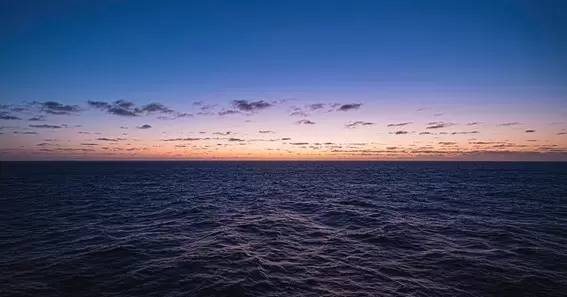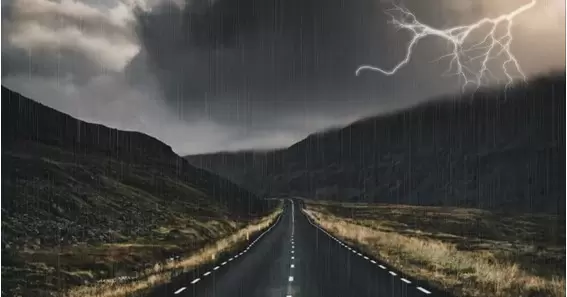What time is dusk? Dusk is a tranquil and exciting moment when the day turns to darkness. Many people associate this wonderful season with evening dusk when the sky turns a picture of fading light and darker hues. Learning when dusk occurs can help us understand how this daily occurrence influences our lives and the globe.
What Time Is Dusk?
Dusk usually begins after sunset and lasts until the sky is dark. Different regions, seasons, and weather can affect when nightfall occurs. Dusk usually starts as the sun sets and the sky darkens. This adjustment reduces sunlight as nightfall approaches. This transition begins with civil twilight after sunset. Currently, there is enough light outdoors to perform most tasks without lights. As the sun sets, nautical twilight begins.
Components Of Cosmic Twilight From Dusk To Darkness
Cosmic twilight is when scientists can observe stars without sunlight. Complete darkness ends at dusk this is what time is dusk. This ends astronomical twilight and begins darkness. Understanding dusk and when it occurs requires studying its components. Here we discussed further what time is dusk:
Civil Darkness

After sunset, there is civil twilight and the start of dusk. There is enough natural light to accomplish most outside activities without lighting. This step takes roughly 30 minutes, although it might be longer or shorter depending on location and season. The sun is 6 degrees below the horizon.
Many everyday actions and routines depend on civil nighttime. It offers individuals travelling home from work or school a natural transition period to get there securely without illumination. Gentle illumination is healthier for your eyes than harsh sunshine, making this phase ideal for outdoor activities like walking, running, and riding.
Sea Twilight

After civil twilight, nautical twilight follows. The sun is 6–12 degrees below the horizon. Since you can scarcely see the horizon at sea, sailors use stars and remaining light to navigate. Maritime activities and shipping are crucial now.
Marine Twilight’s deep blue sky is magnificent for nature enthusiasts and photographers. This is an excellent time to observe the horizon and more prominent stars, making tracking and stargazing simple.
Sky Twilight

Dusk ends with observational twilight. Scientists may view stars and other celestial things without sunlight when the sun is 12 to 18 degrees below the horizon. This phase begins in nighttime darkness, making it crucial for stargazing and astronomy.
Astronomical twilight is optimal for viewing distant planets, stars, and galaxies. Less light pollution makes the night sky brighter and more detailed.
Seasonal Changes

Seasons affect dusk timing. Summer dusk lasts longer due to the Earth’s tilt and longer days. Winter is darker quicker because the sun sets sooner, and twilight lasts shorter. Seasonal dusk shifts are more visible at higher latitudes. Summers near the poles can experience “white nights,” when the sun doesn’t set and dusk lasts all night.
Geography Differences

When and how long nightfall lasts depends on location. High latitudes, especially near the poles, have hours-long twilight. Twilight is shorter and sharper at higher latitudes.
Nightfall lasts 20–30 minutes in warm climates, making the day-to-night transition more abrupt. Why? The sun sets at a high angle. Upper elevations have more extended darkness, notably around the summer and winter solstices.
Weather Effects

Cloud cover, temperature, and pollution affect dusk’s appearance and duration. Clear skies make twilight last longer and stand out, while cloudy skies make nightfall early and darker.
Humidity makes twilight hues like reds, oranges, and purples brighter. However, pollution may spread light and make objects appear hazier, changing the sky’s tint. Different weather can create beautiful and charming twilight scenes.
Sky Events

Moon eclipses can alter dusk vision and mood. These activities allow visitors to view the sky change during twilight and enhance nightfall.
Due to its changing color and light, a lunar eclipse at sunset may make the moon appear like it’s from another universe. Dusk also makes meteor showers and planet conjunctions easier to view.
Cultural Value

Diverse cultures have diverse meanings for dusk. Many cultures gather around nightfall to contemplate, pray, and socialize. It is commonly associated with evening and nighttime rituals.
Some cultures consider nightfall a holy time for meditation and prayer because it allows individuals to contemplate alone. During festivals and festivities, people burn candles to honor darkness in everyday life and spirituality. Indians listen to the call to prayer every night during Diwali. This is all about what time is dusk?
Conclusion
The answer to what time is dusk was fully discussed above. The day-night transition is stunning around dusk. Each twilight stage has its characteristics and connotations. Location, season, and weather affect dusk. Learning about these aspects helps us appreciate this extraordinary occurrence and how it impacts us and nature. Every day, dusk shows how rapidly things may change, whether the lengthy summer twilight or the short winter nightfall.
FAQ
What Is The Difference Between Twilight And Dusk?
Twilight might be civil, maritime, or astronomical. It occurs between sunset and dusk. The sun sets at dusk, making the world utterly black. Celestial dusk ends. At sunset, daylight ends, and night begins.
How Long Is The Evening?
Where you reside and the season affects the length of dusk. It usually lasts 30–60 minutes. Dusk can extend hours near the poles, especially in summer. In warm climates, dusk lasts 20–30 minutes and changes rapidly.
Can Different Places Have Different Dusks?
Dusk occurs at various times in different areas. Some regions far from the equator have quite varied dusk onset and length. Time zones and natural factors cause dawn and dusk to vary worldwide.
What Should Scientists Know About Dusk?
Astronomers require dusk, especially astronomical twilight because it is dark enough to see stars, planets, and other celestial bodies without sunlight. This season is ideal for stargazing since it clears up the night sky.
What Changes At Night?
Different animals behave differently at dusk. Many crepuscular creatures are active in the dark and morning, but some animals commence evening behaviour at dusk. Dusk modifies how animals feed, hunt, and migrate, making it a crucial season to research animal behaviour.
What Are Some Significant Components Of Cosmic Twilight?
Here Are Some significant components
- Civil Darkness
- Sea Twilight
- Sky Twilight
- Sea changes
- Geography Differences
- Weather Effects
- Sky Events
- Cultural Value
Sources:
https://www.suntoday.org/sunrise-sunset/what-time-is-dusk.html
https://www.timeanddate.com/astronomy/dusk.html
We have covered all the below topics in the above article
Dusk time definition
Dusk time explanation
When is dusk
Time of dusk










